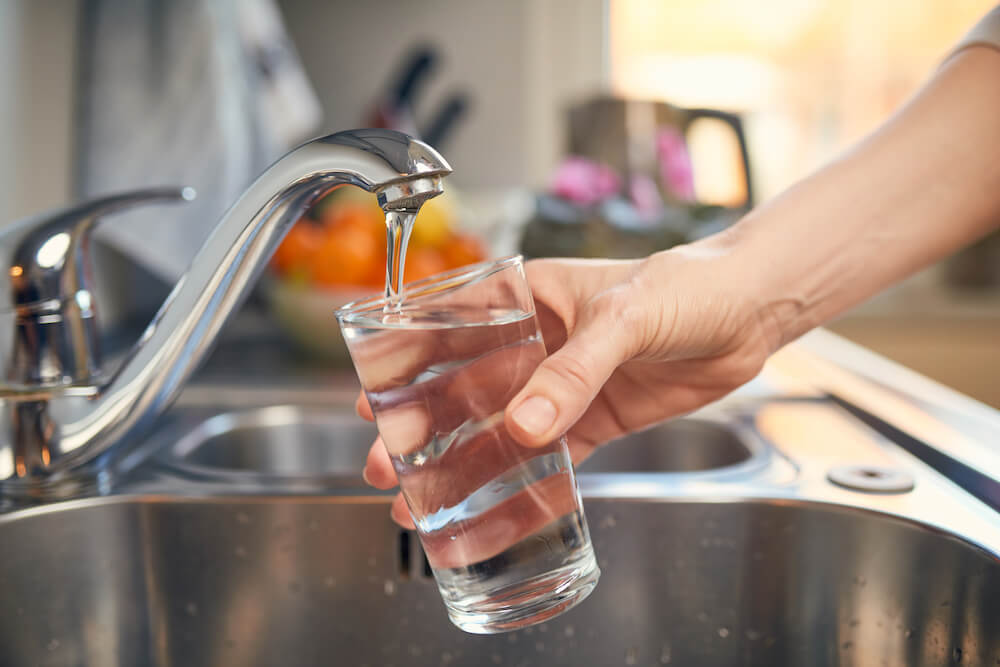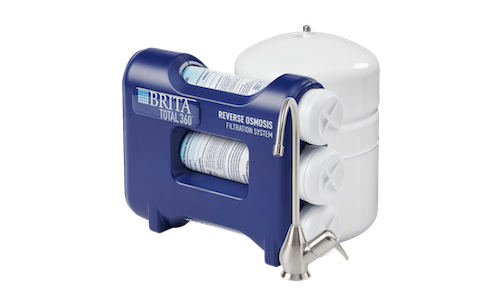Forever Chemicals in Your Tap Water
What PFAs & Other Chemicals Do To Your Body

Per- and polyfluoroalkyl substances (PFAS), also known as “forever chemicals,” are man-made substances that are nearly indestructible. Forever chemicals were manufactured as early as the 1940s and pose serious health risks. Known for being dangerous pollutants that are commonly associated with drinking water contamination, forever chemicals such as perfluorooctanoic acid (PFOA) are used in firefighting foam at airports, food packaging materials, nonstick pans, waterproof apparel, carpets and more.
Unfortunately, due primarily to industrial pollution, forever chemicals are now commonly found in tap water throughout the United States. By knowing how to protect your home’s water supply and what you put into your body, you will be able to limit the amount of PFAS within you.
There are more than 4,700 known forever chemicals that make up the PFAS family of chemicals with PFOA and perfluorooctane sulfonate (PFOS) being the most common. PFAS are made up of linked carbon and fluorine atoms, and because the carbon-fluorine bond is so strong, PFAS are nearly indestructible. They do not degrade in the environment and scientists are not yet even able to determine when they reach their half-life.
PFOA and PFOS are no longer made in the United States, however, manufacturers have replaced them with similar chemicals that also belong to the PFAS chemical family, such as GenX. Created by E.I. duPont de Nemours and Company (DuPont) in the late 2000s, GenX was engineered to be a replacement for PFOA once science, lawsuits and some state regulations began to catch up with how dangerous PFOA and PFOS are. However, EPA and independent researchers now believe that GenX may be even more dangerous than PFOA. Also, despite PFOA and PFOS no longer being made in the United States, some other countries still produce items using them, meaning it’s possible for Americans to still purchase products that contain PFOA or PFOS.
What PFAs and Other Chemicals Do To Your Body
The EPA and federal government currently have no enforceable limits on the level of PFOA, PFOS or other PFAS in tap water. Government health advisories have been established for PFOA and PFOS in drinking water, based on data from lab studies. The EPA’s health advisory for both PFOA and PFOS combined is set at 70 parts per trillion (ppt) over a person’s lifetime.
The advisories, which are not enforceable, offer state governments and municipalities guidelines to help protect local residents from water contaminated by PFAS. However, what states and municipalities have done with that data is inconsistent, as guidance varies based on state and there is little overall government oversight of PFAS.
The federal government unveiled in October 2021 that the EPA developed and will roll out a PFAS Strategic Roadmap to help protect public health and begin curtailing the problem.
What Happens if You Drink Water With PFAS?
Consuming PFAS in any quantity is alarming, because they will accumulate in your body over time since they are virtually indestructible. Forever chemicals have been linked to a variety of serious health conditions, including:
- Increased cholesterol levels
- Testicular, kidney, liver and pancreatic cancer
- Decreased fertility or increased high blood pressure in pregnant women
- Birth defects
- Decreased vaccine response in youth
According to the Environmental Protection Agency (EPA), scientists have found PFOA and PFOS in the blood of nearly all individuals who have been tested. The Environmental Working Group, meanwhile, estimates that more than 200 million Americans have water contaminated by forever chemicals with a concentration of at least 1 ppt, a key figure since many scientific studies suggest a safe level for PFAS in drinking water is 1 ppt or less.
Impacts on a person’s immune system are still being studied and are of particular concern. Many reputable studies show evidence that PFAS alter the immune system and diminish a child or adult’s ability to respond to illness, and in some instances, vaccines.
Finding answers will take time. Independent researchers are unsure of the toxicity levels of many PFAS or their mixtures because they don’t have the opportunity to study the chemicals until they are already on the market. This is because in the United States, in many instances, companies are not required to prove chemical product safety. Historically, the EPA determines whether chemicals and products are safe and acceptable, but EPA analyses don’t usually occur unless health concerns are raised.
Food and Beverage Choices to Reduce PFAS Contamination in Your Body
One way to limit the amount of PFAS you put into your body is to be mindful of what ready-made and takeout food you purchase and how it has been packaged. For example, many fast food restaurants have been using food packaging materials that have been PFAS-treated for years. Paper bags, burger wrappers, bowls and fry containers from several large-scale fast food chains—including Taco Bell, Burger King and McDonald’s—have been found to contain PFAS over the last several years.
Some of these chains have publicly stated they have been or will be switching to PFAS-free wrappers and containers, however, it’s not a quick switch for many fast food chains, as PFAS are used to help make water- and grease-resistant packaging, making them convenient. Further, if you eat fast food and are concerned you have packaging items that contain PFAS, you should not compost those items.
Recent tests and studies have also been conducted which confirm PFAS contaminate a variety of bottled beverages, including spring and sparkling water.
Does LaCroix Have PFAS?
Yes, LaCroix, and many other sparkling water brands—such as Topo Chico, Perrier and Polar—contain PFAS. A 2020 Consumer Reports test shows a variety of canned and bottled water sources are contaminated by PFAS, many of which are considered to be at unsafe levels.
The results indicate Topo Chico, made by Coca-Cola, measured levels of 9.76 ppt, making it the worst offender. Coca-Cola has since upgraded its water filtration methods, however, and Topo Chico tested at 3.9 ppt in 2021, showing significant improvement. However, that level of contamination is still significantly higher than the 1 ppt many scientists recommend for safety.
Does reverse osmosis remove PFAS?
Select reverse osmosis (RO) systems are powerful filtration systems that can reduce PFAS from your home’s tap water. Designed to provide powerful filtration for kitchen or bathroom sinks, RO systems use a three-stage filtration process to move water through a carbon pre-filter, a semipermeable membrane and post-filter.
If you are concerned about forever chemicals in your tap water, investing in a RO system that’s third-party certified to reduce PFAS is likely the best way to look after your drinking water and overall health. While not all RO systems are proven to reduce PFAS, the Brita Total 360 Reverse Osmosis System is certified to NSF/ANSI standard 473 for the reduction of up to 97% of PFOA and PFOS in your drinking water. The system installs directly under your kitchen or bathroom sink and will provide your tap with cleaner, healthier water.
Worried about PFAS in your drinking water?
Install the Brita Total 360 Reverse Osmosis System under a kitchen or bathroom sink in your home to reduce two types of PFAS that can harm your body.
Shop Brita Total 360
To explore more about what PFAS are, and the dangers they pose, this companion resource offers additional information.